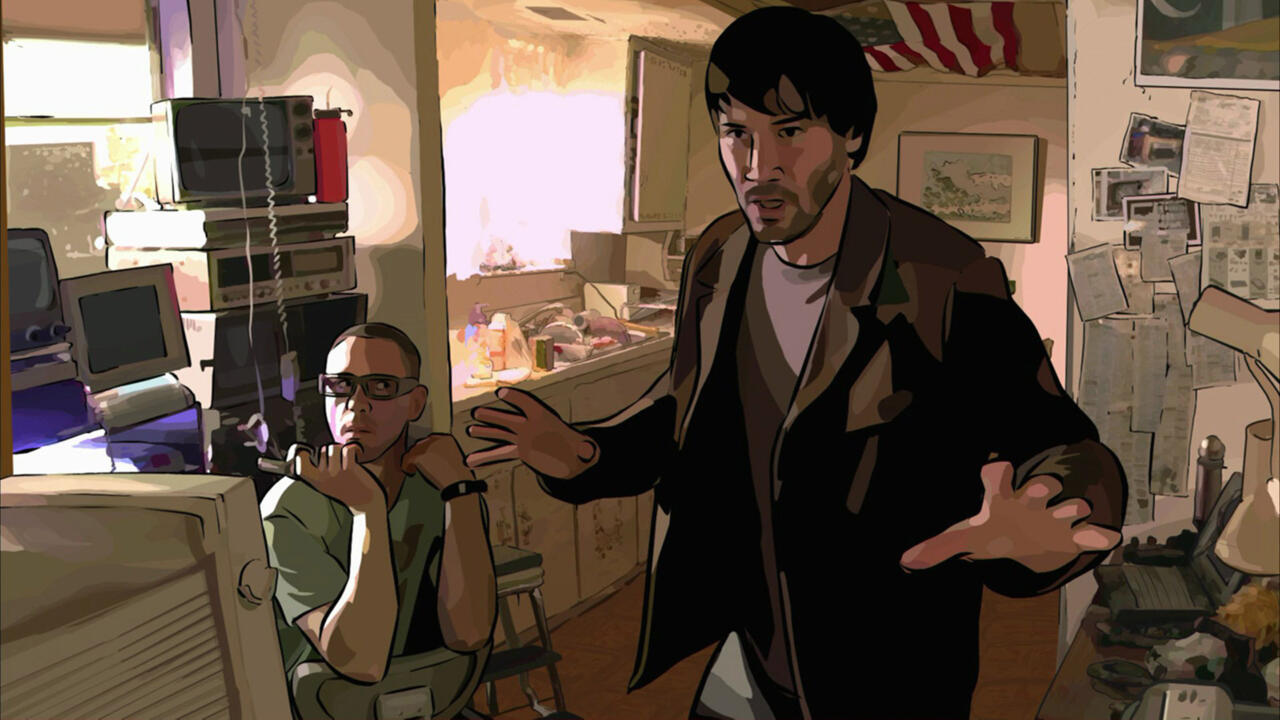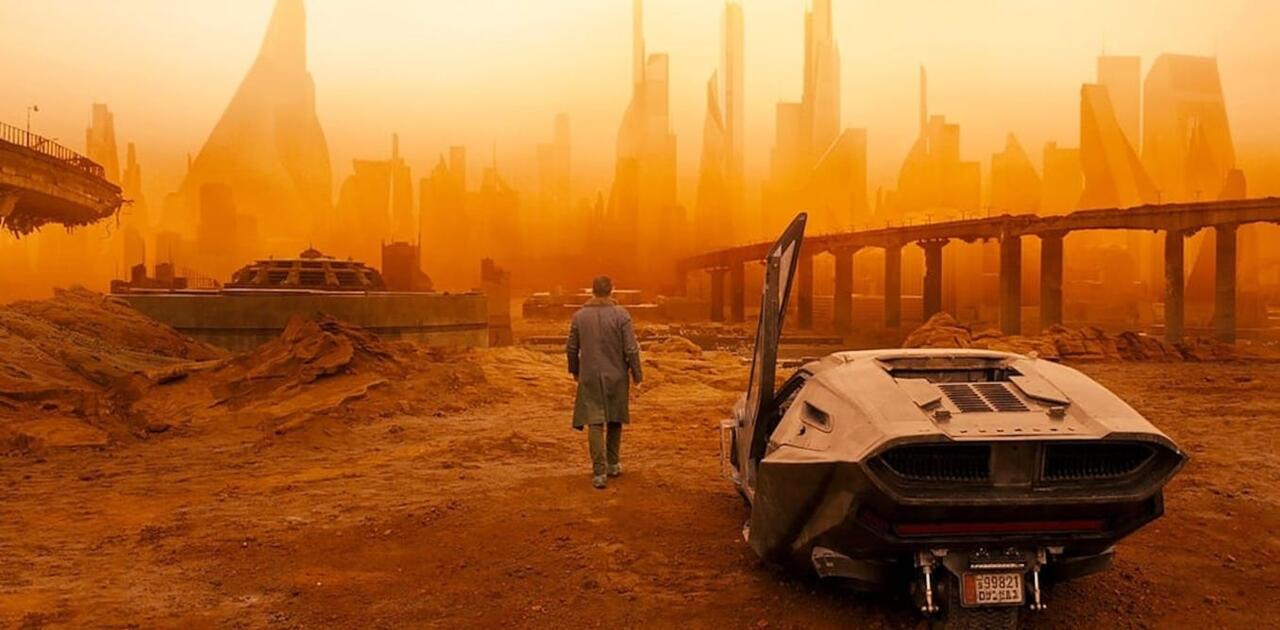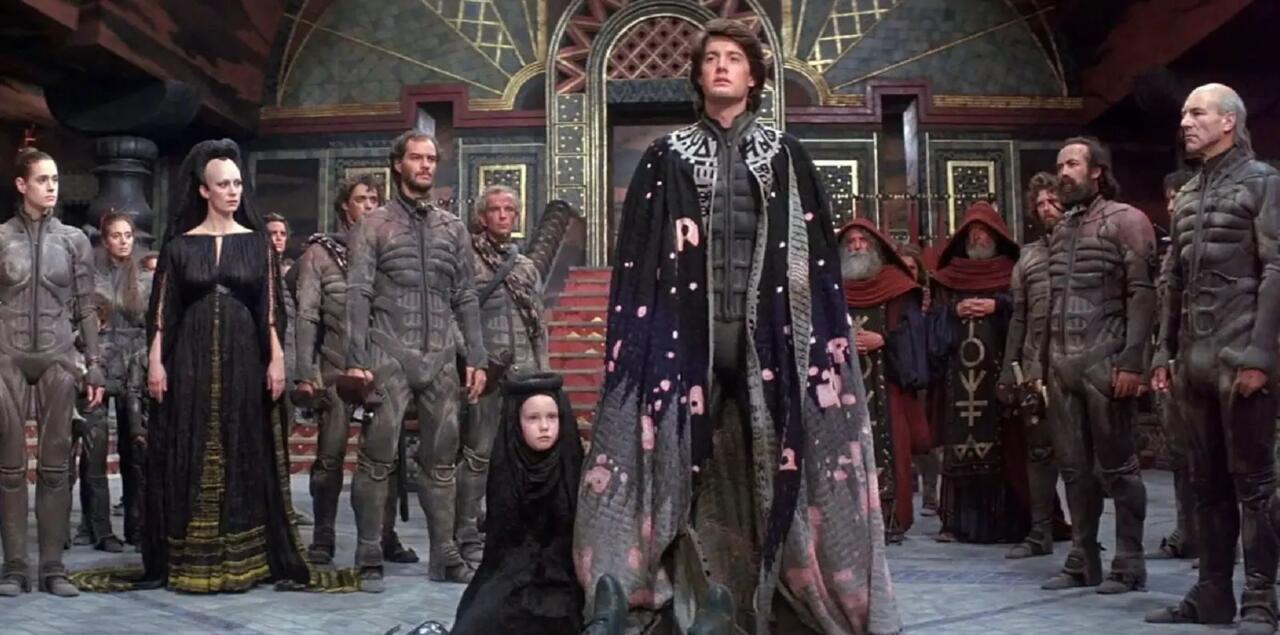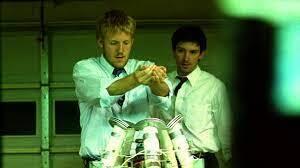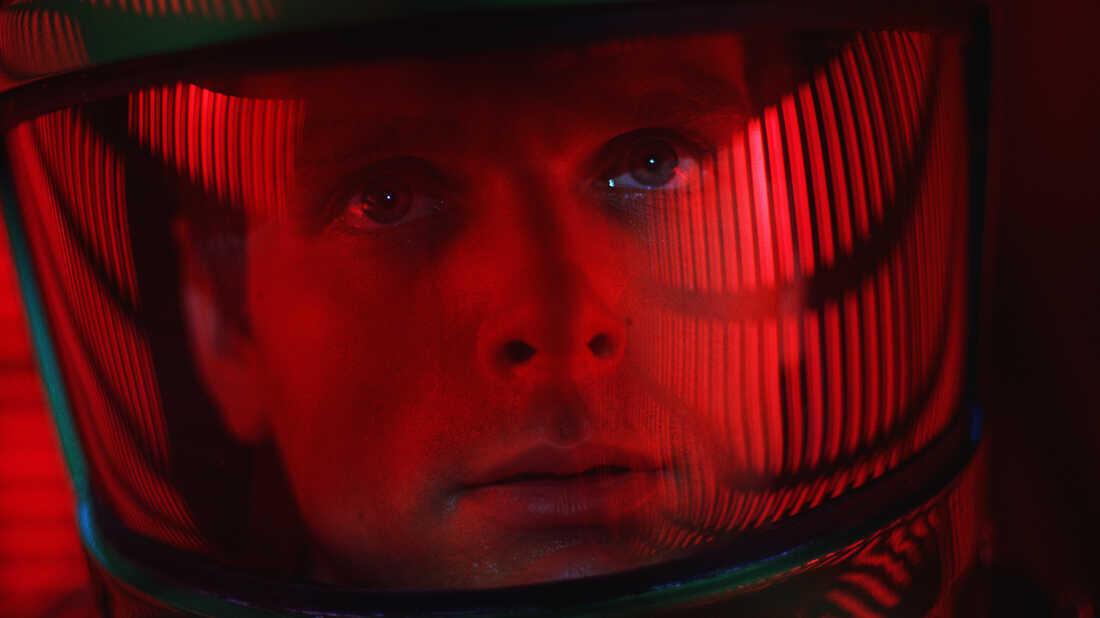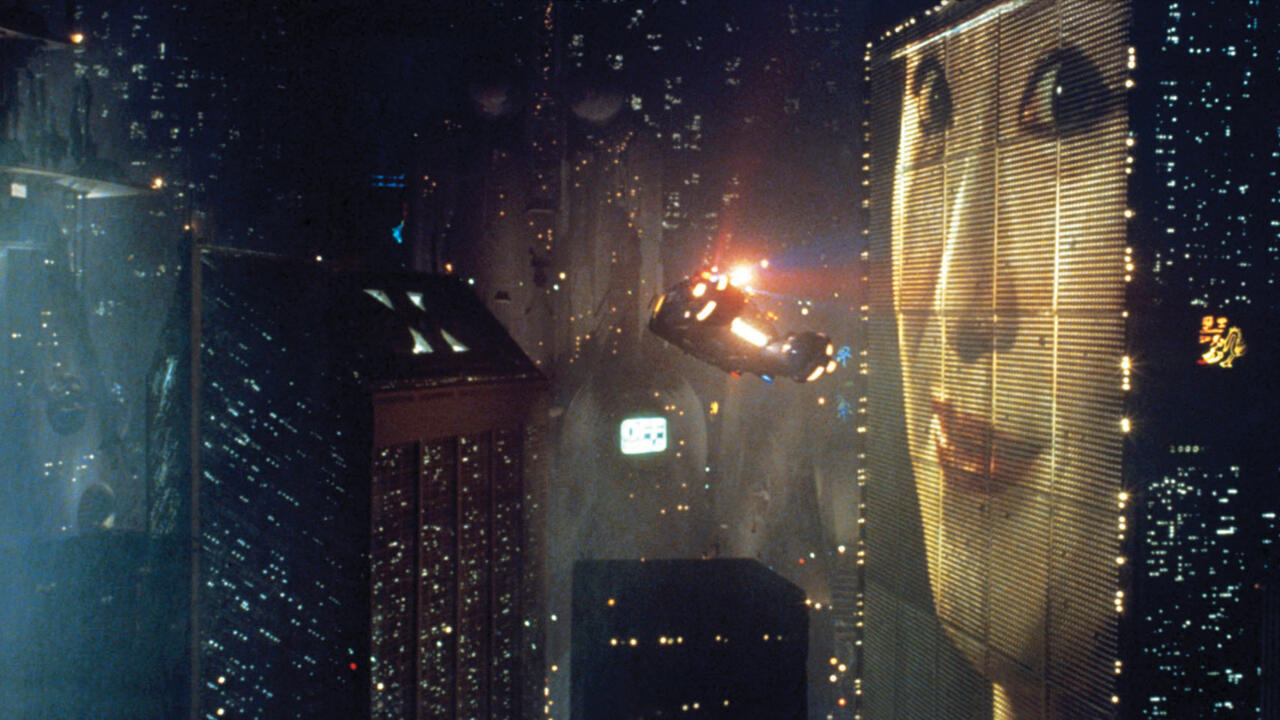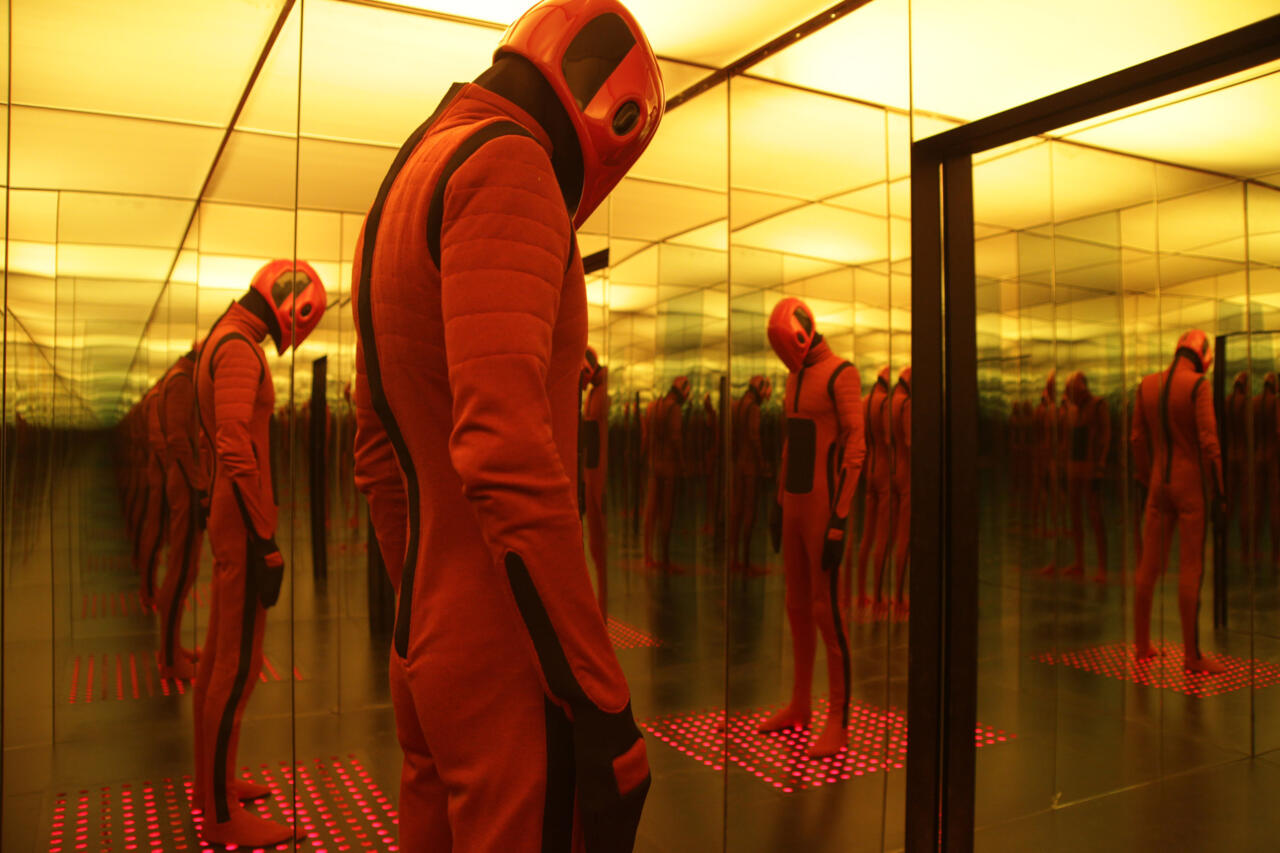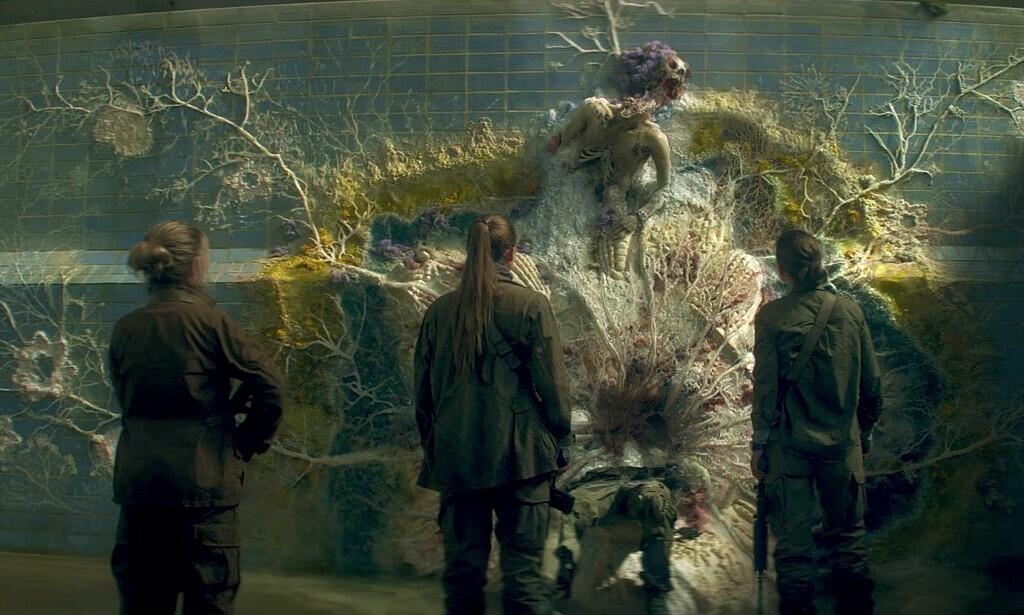10 Super Intense Sci-Fi Movies To Watch While You Prepare For Dune: Part Two
GameSpot may receive revenue from affiliate and advertising partnerships for sharing this content and from purchases through links.
Sometimes, you want big, dramatic, and easy-to-swallow science fiction like Pacific Rim--it's colorful, loud, funny, and fun. But science fiction as a genre is vast and diverse, ranging from adventure to horror, approachable to heady.
Frank Herbert's Dune is one of the most popular science-fiction novels of all time, but it's also on the brainier side. The book throws tons of political and ecological information at you and asks you to imagine humanity 10,000 years into the future when computers are outlawed and intergalactic space travel is made possible by creatively overdosing on the universe's most popular drug. It's also a story about a young man unwittingly conditioned and trained to be not just a leader of men, but the leader of men, and it tries to criticize the idea of a messiah and of genetic tampering.
Dune has also proven difficult to film, with David Lynch's 1984 version leaving many people cold thanks to its heavy divergences from the original story, and Syfy's made-for-TV movie version looking pretty cheap even when it originally aired in 2000. Director Denis Villeneuve's talent for epic visuals, proven in projects like Blade Runner 2049 and Arrival, brought Dune to life with a fidelity that fans of the books never thought possible. It's not perfect, but it gets a lot closer to the source material than we'd expected. 2020's Dune covers roughly the first half of the book, though, and the upcoming Dune: Part Two is set to finish the first novel this November 3.
With Hollywood's writers and actors striking for fair pay and contracts that ensure they won't be replaced by computers, though, studios may be looking to stretch out what movies they have ready while they try to avoid doing just that, and Dune: Part Two might become a 2024 movie. And thus, the cerebral science fiction you were promised could be pushed frustratingly out of reach. So what's a sci-fi fan to do? This is our list of weird, atmospheric movies that fall somewhere under the umbrella of science fiction, even if only partly. And we're just going to say it now: Virtually every movie on this list struggles with pacing. There are a lot of slow movies on this list, but they're all gorgeous and fascinating. Here they are, in no particular order.
10. Blade Runner 2049 (2017)
Blade Runner 2049 should suck. It's a sequel made decades later to a classic sci-fi film that didn't need further expansion. Blade Runner stands well on its own. But Denis Villeneuve found a way to both revisit Blade Runner and make it his own thing. Villeneuve excels in creating vast, lonely spaces with expansive soundscapes. As Officer K searches for Rick Deckard and clues about his own identity, we visit parts of Blade Runner previously unseen, like the deserted Las Vegas, covered in powdery, red dust bowl sand. It seeks to ask more questions of the future world about where identity and memory come from, and what it means to have manufactured memories as all of the film's Replicants do.
9. Under the Skin (2013)
In Under the Skin, Scarlett Johansson plays the part of an unnamed woman who roams the cities of Scotland looking for lonely men to take back home. When they enter her space, though, they find themselves walking into an inky void that consumes them. This is a movie about an alien's perspective on human relationships and the human body, and how strange and scary they can both be. Johansson excels at making her sexuality awkward, robotic, and off-putting as she preys on men. Later, that turns back on her as she begins to become curious about the very humans she's victimized. The movie is quiet, isn't afraid to leave things unexplained, and it will leave you with lots of questions and little comfort when the credits roll.
8. Dune (1984)
David Lynch's Dune is a divisive movie, as discussed above. It's not a bad movie, just a really weird one. Lynch was given a huge (at the time) $45 million budget to work with. Compared to his previous works, Eraserhead and Elephant Man, that was astronomical. Dune has always seemed ambitious, and Lynch did his best to make sense of the story within an acceptable runtime. That required some shortcuts that fans of the book find weird and, often, downright unacceptable. For example, the idea of the Bene Gesserit "voice," a sort of hypnotic command used in the story, was turned into a physical weapon that the Fremen would use against the Harkonnen. Yeah, that part isn't great. But the movie also features some of the richest, most lavish set design in all of moviemaking. Nothing else out there looks like this version of Dune. From the opening shots on Paul Atreides' home planet of Caladan and the ultra-industrial Geidi Prime to the designs of Spice Harvesters and the look of the Guild navigators, everything about Lynch's Dune screams imagination. Even if you can't take the story entirely seriously, this movie is worth watching just for the visual feast of practical set design and visual effects it offers.
Also, you should probably watch Denis Villeneuve's Dune before you see Dune: Part Two. Just saying.
7. A Scanner Darkly (2006)
Philip K. Dick's A Scanner Darkly is one of his darkest stories, presenting a near-future world where drug addiction is endemic. Police use identity-masking technology to infiltrate groups to study users and find their sources. The story deals with themes of drug addiction and paranoia and uses rotoscoped animation--animation made using filmed live-action footage (other examples include Prime Video's Undone, Waking Life, Ralph Bakshi's Wizards, and many older Disney animated movies)--to create a strange, dreamlike world. Characters wearing the identity-masking technology shift and blink as the technology changes different parts of their faces and bodies in turn. The film is deceptively bright and beautiful, masking a lonely, scary tale as protagonist Bob (Keanu Reeves) becomes addicted to the very drug he was meant to root out and begins to lose himself. It can be a tough watch, but it's also one of the more faithful Philip K. Dick adaptations out there.
6. Primer (2004)
"Are you hungry? I haven't eaten since later this afternoon." That's the line where Primer will either catch you or miss you. There are three major types of time-travel movie. The first is fun--Bill & Ted's Excellent Adventure and Back to the Future use time travel to facilitate goofy adventures. Action flicks like Edge of Tomorrow would land here as well. The second is drama--Somewhere in Time and It's About Time are more interested in telling a touching or tragic story than exploring the implications of time travel. Primer, though, is an example of the third type: the mind-bender. After watching Primer for the first time, you'll think that someone cracked the science of time travel and made a documentary about it. At 77 minutes, this movie is a quick watch, but that doesn't mean it's an easy one.
Writer-director-composer-lead actor Shane Carruth is a mathematician and engineer and wrote the script for this with all the technical language intact, making it easy to get lost in the conversations. Filmed for just $7,000, Primer is a true indie film and one that wants to explore the weirdness and mundanity of time travel. Things are fun and exciting at first, but they don't stay that way.
5. 2001: A Space Odyssey (1968)
2001 is so well-ingrained into popular culture that whether you've seen it or not, you know the ways other popular culture references it. In the distant future--the year 2000--astronauts find a towering black monolith buried on the moon. Built in a perfect 1:4:9 ratio and using materials unknown to man, this is the first sign of alien life. Eighteen months later, the United States has launched a mission to Jupiter to find out what the Monolith was signaling. What begins as space exploration becomes a dangerous fight against a conflicted artificial intelligence named Hal 9000, and then becomes a metaphysical exploration of the origins of man and intelligence. The movie is lauded for its authentic depiction of space despite the fact that it was released in 1968, before our first moon mission. Make no mistake, 2001 is a slow movie. But 55 years later, it's still a stunning film that has relevant ideas about artificial intelligence and consciousness.
4. Blade Runner (1982)
You knew Blade Runner would end up on this list. It's tough to recommend because there are so many different versions of Blade Runner and they all have problems. Blade Runner: The Final Cut is probably the closest to a full encapsulation of Ridley Scott's original vision for the movie. Another Philip K. Dick adaptation, Blade Runner strays further from its source material than A Scanner Darkly. But just like Lynch did with Dune, it established a visual language that in turn influenced how many readers imagine the book. It set an early precedent for the look of cyberpunk media that continues to inform new projects in the cyberpunk genre, from Cyberpunk 2077 to Johnny Mnemonic to Ghost in the Shell. You could watch it on mute and it would still be an incredibly rich experience.
3. Beyond the Black Rainbow (2010)
Described by its director, Panos Cosmatos, as a "trance film," Beyond the Black Rainbow is a strange and meandering sci-fi horror movie. Set in the 1980s, it follows a young woman named Elena, who seemingly has psychic powers, and who is imprisoned in a place called the Arboria Institute. The movie is tense but full of gorgeous shots that bathe the screen in color. It also has an awesome synth soundtrack provided by Jeremy Schmidt of Black Mountain that amplifies the film's ominous atmosphere.
2. Upstream Color (2013)
Trying to explain the plot of Upstream Color is tough. Directed by Primer's Shane Carruth, the movie explores ideas about breaking cycles and the culpability of someone taking part in an exploitative ecosystem. Protagonist Kris (Amy Seimetz) is forced to swallow a larva that has strange effects on the human mind. She's kept in a hypnotic state by her captor and gives up all of her personal effects before she's released. Later, she meets someone with similar scars, and the two begin to experience unexplained empathetic responses to pigs on a farm. The responses lead them to the farm and clues about what happened to them. Like Carruth's other work, Upstream Color is short, clocking in at only 96 minutes.
1. Annihilation (2018)
One problem that often plagues science fiction is how heavily it depends on known tropes--it promises an alien world but gives us one full of bipedal creatures with two eyes, who let us know whether they're friendly or not by firing (or not firing) a gun of some kind. But what if that alien life was unrecognizable from what we view as life? What if it was hostile in its very existence, not because of a conscious decision to attack? Annihilation, based on the 2014 book of the same name by Jeff VanderMeer, is one of the few science-fiction movies that feels like it's presenting something truly alien. The world around the protagonists often makes no sense to them until it's too late for them to do anything about it. The life beyond the Shimmer in Annhilation is vibrant, colorful, and sometimes incomprehensible, and it makes for a visually rich and narratively strange experience.
